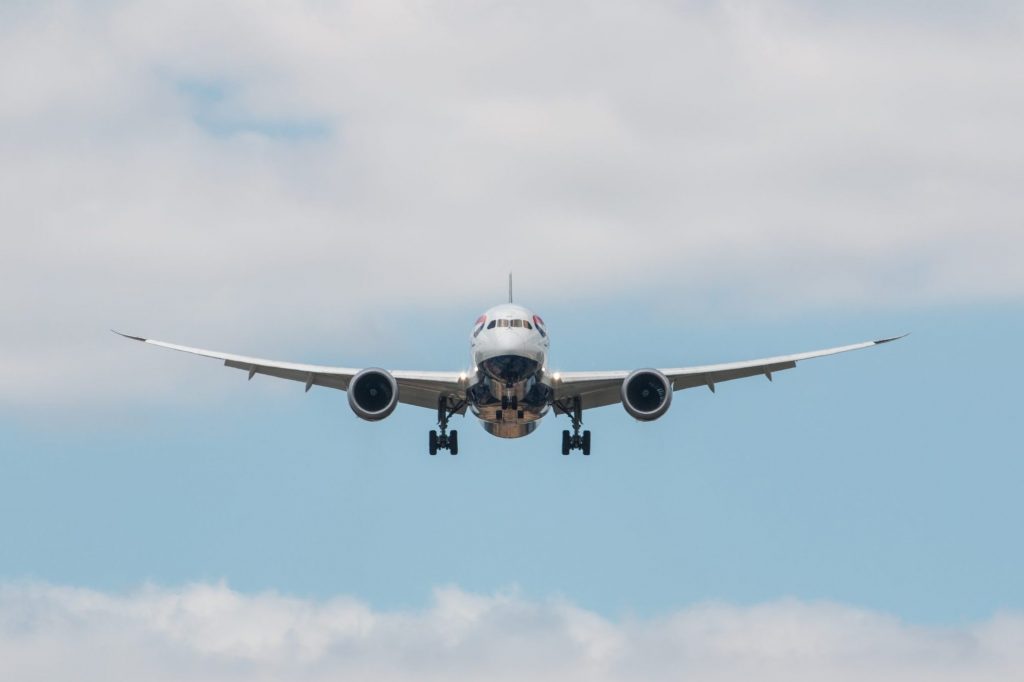Skift Take
Airlines have tried to get out in front of regulators when it comes to sustainability. But their tweaks and solutions only scratch the surface of the problem. In 20 years' time, will we all look back on an era of frequent flying as one of dangerous excess?
The aviation industry is throwing money at initiatives aimed at decarbonizing flying in the hope that it will stop government and regulatory interference.
The likes of EasyJet, IAG, and JetBlue in the past few months have all announced various schemes that on the surface look great for the environment. But while offsets and other initiatives are good in theory, they don’t alter the fact that aircraft will continue to pump millions of tons of carbon dioxide into the air at high altitudes.
As outgoing IAG CEO Willie Walsh said at a recent event focused on sustainability: “Our industry unfortunately doesn’t have a viable alternative to a carbon-based fuel today.”
Join Us at Skift Forum Europe in Madrid on March 24–25
At the moment flying might only contribute just over 2 percent to global emissions. That figure, however, is only going to rise thanks to increasing demand and improvements in other industries. This means governments and regulators are having to act. As part of its Green Deal, the European Union will “look closely at the current tax exemptions including aviation.” And several countries are bringing in new or enhanced eco-taxes.
Flight shaming has put the industry on the back foot. The problem is it doesn’t have any radical alternatives in the short term.
Aviation’s most eye-catching change, the electric or hybrid plane, is decades away. Airbus CEO Guillaume Faury said a hybrid aircraft could go into production by 2035, but even that date is likely to be optimistic. Just consider the testing involved to make sure the model was safe. Plus, would the big airline groups really be willing to junk all those A350s and 787s?
In any case, by the time electric aircraft come into mass service, it will likely be too late to make a difference anyway. The United Nations Intergovernmental Panel on Climate Change (IPCC) issued a report on limiting the global rise in temperature to 1.5C in 2018, warning that we only really have until 2030 to avert a climate disaster.
In order to keep to 1.5C the report found that “rapid and far-reaching” changes would need to take place in areas such as transport.
“Global net human-caused emissions of carbon dioxide (CO2) would need to fall by about 45 percent from 2010 levels by 2030, reaching ‘net zero’ around 2050. This means that any remaining emissions would need to be balanced by removing CO2 from the air,” the report’s summary said.
While the global aviation industry has committed to a 50 percent cut in net emissions by 2050, under Walsh, IAG has gone further, aiming for net zero in the same time frame. It’s certainly an impressive target, but scratch the surface and the problems become apparent.
Thanks to rising demand, new aircraft, operations, and alternative aviation fuel would only bring gross emissions to a slightly lower level than where they are today. The rest comes from the controversial use of carbon offsets.

To be fair, Walsh is upfront about this, saying that it was “very important that we don’t try and mislead people” and that IAG would have to effectively “pay to help others to reduce their CO2.”
Aside from offsetting, which is itself problematic, the sustainable alternative of biofuel appears to offer an environmental upside in the short to medium term, but it too has its drawbacks (and its credentials depend on where it comes from).
At the moment, biofuel accounts for a microscopic proportion of the total fuel used.
A target of 2 percent by 2025 still looks tiny, but global body International Air Transport Association reckons this could well be the tipping point needed.
Part of the reason for its limited uptake is price. Alternative aviation fuel is around five times more expensive than ordinary kerosene-based jet fuel. One way to get it closer would be through tax cuts or other incentives.
“At the moment we don’t see any price competitiveness of SAF (sustainable aviation fuel) on its own for the foreseeable future so there needs to be regulatory measures taken in order to achieve that situation,” said Henrik Erametsa, head of aviation regulation at Nesté, Finland’s biggest oil refiner and renewable fuels manufacturer.
Airlines are understandably keen to talk about tax cuts for alternative jet fuel — but not if that means losing the break that they currently enjoy on standard kerosene-based fuel. When the industry complains about overtaxation, it frequently ignores the fact that international flights are largely exempt thanks to a 1944 global deal.
The airline industry cannot have it all its own way. To decarbonize it’s going to have to deal with carrots as well as sticks.
Regulators can help by improving airspace — particularly in Europe — and offering tax breaks on fossil fuel alternatives as well as research and development grants into new types of aircraft. But airlines and airports will probably have to deal with new forms of taxation that may end up impacting demand. Because at the moment, that’s the only realistic solution that goes far enough.
Register now for Skift Forum Europe in Madrid on March 24–25
The Daily Newsletter
Our daily coverage of the global travel industry. Written by editors and analysts from across Skift’s brands.
Have a confidential tip for Skift? Get in touch
Tags: airlines, brexit, europe, european union
Photo credit: A British Airways aircraft. BA-owner IAG has committed to net-zero carbon emissions by 2050. Steve Lynes / Flickr
